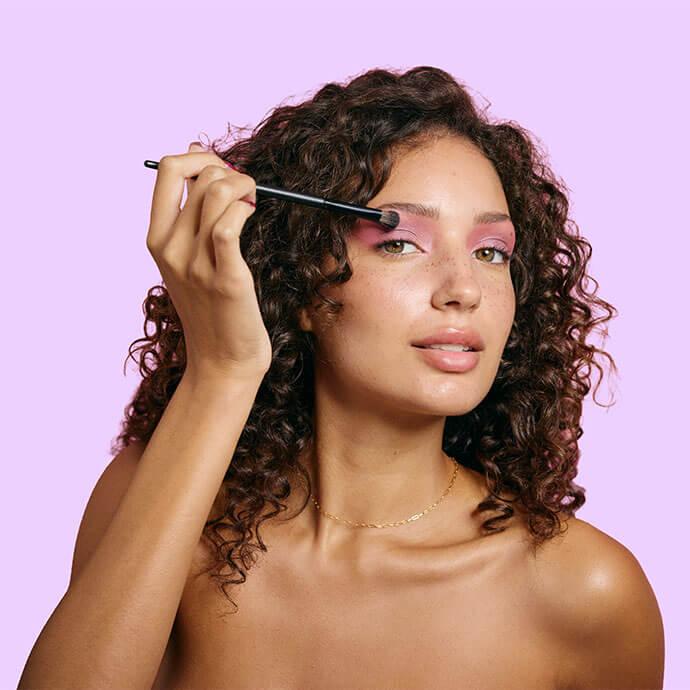Does Laser Hair Removal Really Last Forever? We Have the Answer



Katrina Mitzeliotis Lanza


Whether you see an esthetician religiously for your monthly wax or you prefer shaving in the shower, there’s no denying the fact that hair removal can be a tedious task. Thankfully, a more permanent hair removal solution exists (and you may have heard of it!): laser hair removal. The laser technology behind treatments has advanced over the years, and so has the accuracy and effectiveness of the lasers—which means that even if you shelled out money for a round of treatments 10 years ago, you might experience better results today.
But before we dive into whether or not laser hair removal will banish your unwanted hair forever, it’s important to understand how laser hair removal works in the first place. “When the laser emits a band of light that is selectively absorbed by the melanin (pigment) in the hair follicle, that energy is converted to heat,” says Chris G. Adigun, MD, FAAD, board-certified dermatologist at the Dermatology & Laser Center of Chapel Hill. “That heat damages the follicles that produce hair, thereby inhibiting further hair growth from that follicle.”
Ready to zap away your stubborn hairs? Well, you’ve come to the right place. Read on for tips from the pros before you commit to laser hair removal.


It's about glam time you treated yourself.
MEET THE EXPERT
Sam Rakhminov is a laser hair removal and laser machines specialist with more than ten years of experience. After working at various laser spas, he opened Infinity Laser Spa in 2013.
Chris G. Adigun, MD, FAAD, is a board-certified dermatologist in Chapel Hill, North Carolina, and practices both general dermatology and cosmetic dermatology at the Dermatology & Laser Center of Chapel Hill.
Christian Karavolas is the owner of Romeo & Juliette Laser Hair Removal in NYC. He is a consultant to DEKA, CYNOSURE, CANDELA, and LUMENIS. He also serves as the president of the New York State Association of Laser Hair Removal Specialists.
How long does laser hair removal last?
With proper aftercare and maintenance, many clients experience hair-free results that last for years at a time. “Most people will be left hairless after an initial round of laser hair removal treatments,” says Rakhminov, who says routine touch-up sessions help clients keep unwanted body hair from growing back. “Some patients won’t need a touch-up session for five years after their initial treatment, while others will need one once a year,” says Sam Rakhminov, founder of Infinity Laser Spa in New York City.
But while laser hair removal treatments may be successful in removing current body hair, that doesn’t mean a round of sessions will definitely impact future regrowth. “We develop thicker/[darker] hair in new areas of our body over time, so treatments and touch-ups may be necessary over the course of years,” says Dr. Adigun.
Many clients can go a few years without seeing new hair growth; however, experts advise clients to book yearly maintenance sessions to keep body hair from growing back for good. “Maintenance treatments may be required once or twice a year,” says Christian Karavolas, founder of Romeo & Juliette Laser Hair Removal in New York City. If the treatment area experiences hormonal hair growth, you may need three to four yearly maintenance sessions to keep yourself hair-free. “Facial hair may need more touch-ups throughout the year due to hormonal fluctuations,” says Dr. Adigun.
Is it really permanent?
Before you invest time and money into laser hair removal treatments, it’s natural to have questions and wonder how long these treatments will last. According to the FDA, laser hair removal is a hair growth reduction method. “It can reduce hair growth by up to 90% on the treated area and there is a potential for permanent results,” says Rakhminov.
Many clients will experience permanent—or close to permanent—results. However, it’s important to note that new hair growth and hormonal changes can contribute to the appearance of new hair over time, which could require a touch-up treatment. “We develop thicker/[darker] hair in new areas of our body over time, so treatments/touch-ups may be necessary over the course of years,” says Dr. Adigun.
While you can laser everything from your bikini line to your upper lip to your underarms, new hair growth is more common in areas that experience hormonal hair growth. “Areas where there is less hormonal stimulation to neighboring follicles tend to show less new growth over time,” Dr. Adigun says. “Non-hormonal areas such as legs, bikini, and underarms get the best results,” says Karavolas, who tells clients that hormonal areas may require more sessions.
Changes like hormonal fluctuations during pregnancy or even medication can contribute to new hair growth. “Factors such as the hair growth cycle, genetics, and medication can also influence regrowth,” says Rakhimnov.
How long does it take to see results?
Clients will start to see promising results after their first couple of sessions, but in order to achieve lasting progress, it’s important to complete the number of treatments outlined by your technician. “Usually six sessions are needed, spaced six to eight weeks apart,” says Karavolas.
Just like the hair on our head, the hair on the rest of our body grows on a cycle—which means it doesn’t all come in at once. That’s why multiple sessions are required to catch each individual hair follicle in the growth phase. “A growing hair follicle is vulnerable to the laser, so not all follicles are susceptible in any given treatment,” says Dr. Adigun, who recommends spacing out treatments on a large area like the lower legs eight weeks apart and leaving six weeks in between treatments on the face, back, abdomen, and groin. “As a general rule, the further from the heart, the further the treatments should be apart,” she says.
If you already went through a round of laser treatments and aren’t satisfied with the results, the timing of the sessions could have hindered the process. If you schedule your sessions too close together and try to rush through laser hair removal treatments, this could impact your results in the long run. Dr. Adigun says she sees patients who experience hair regrowth when they “return too quickly for their treatments and therefore fewer susceptible hairs are available for treatment.” In those instances, the technician can’t catch the hair during the growth phase.
Who does it work best for?
A common misconception regarding laser hair removal is that it only works on individuals with dark hair and light skin, but we’ve got some good news: Technological advancements now make it possible for technicians to treat a variety of skin tones. The only catch? The same can’t be said for every hair color. “Anyone without pigmented hair is not a good candidate, and laser hair removal does not work on gray, white, blonde, or red hair,” says Dr. Adigun. This is because the hairs don’t have any pigment for the laser to target—so it makes sense that dark, coarse hair responds best to this kind of treatment.
When laser technology was first introduced, it wasn’t an option for individuals with darker skin. But thanks to advancements in technology, it’s now safe and effective for all skin tones, as long as the wavelength of the laser is right. With the correct wavelength, the laser can target the melanin and zero in on the hair follicle. “The SplendorX can treat all skin types and works on deep skin tones,” says Dr. Adigun, who uses the laser in her practice.
Qualified technicians are able to treat darker skin tones with lasers that can “safely treat all skin types as it deposits the energy deep into the dermis without relying on melanin to do so,” says Rakhminov. Ready for the names of some devices that allow providers to focus on the hair follicle and safely treat darker skin? These include newer 1064-nanometer devices like the SplendorX, Cutera Excel HR 1064 lasers, and the Sciton Joule 1064 lasers.
Regardless of your skin tone, you should always do your homework and discuss the type of laser being used ahead of your treatment. “If a patient has pigmented skin, they should be cautious that the provider treating them has a laser with a wavelength that is safe for their skin type,” says Dr. Adigun.
What can I expect from a laser hair removal treatment?
A laser hair removal session can be quick enough to squeeze in on your lunch break, but the duration can vary from 10 to 40 minutes (the actual length of time depends on whether you’re treating a large or small area). Although nothing is really required of you during the session, it’s important to plan accordingly for your treatment. “You should come in shaved,” says Karavolas. “No waxing or plucking for two weeks prior to treatment and no self-tanner for 10 days.” It's also best to not apply moisturizer or lotions to the treatment area ahead of your session.
While you may plan to start laser hair removal in the spring with hopes for hairless results by summer (we’re ready to flaunt those cute bikinis we got on sale in the fall!), the process requires more time—and less tanning—to be successful. Immediately following the session, you may notice redness on your skin, which is why you should stay out of the sun and use sunscreen if you are going to experience sun exposure “to avoid developing hyperpigmentation,” says Dr. Adigun, as the area is more sensitive to the sun’s UV rays. “Redness can last from a few minutes to perhaps a few hours,” says Karavolas.
The most common side effect is redness, but severe side effects can even include blistering. “Blisters are very rare, but they can happen should the intensity of the machine be too high,” says Rakhminov, who stresses open communication throughout the treatment. “If you feel that the laser is too hot, tell the technician,” he says.
If you're looking for a hair removal method that provides long-lasting results, laser hair removal might be right for you. Just be sure to do your homework to prepare for your treatment. If you’re unsure where to start, Dr. Adigun says you can begin by asking your prospective technician a couple of basic questions: “What kind of training and experience do they have? Is this the appropriate device for my skin type?” Once you have an initial consultation, you can confidently embark on your hairless journey.
Want in on all the IPSY Glam Bag fun? Take our Beauty Quiz now to get started. Already an Ipster? Refer your friends to earn points, which you can use toward products. Either way, don’t forget to check us out on Instagram and Twitter @IPSY.
Liked this post? Share!
Related Stories


How-To
Blush 101: Your Go-To Guide on How to Apply Blush for Your Face Shape
Published on Dec 12, 2025 • 12 min read


How-To
How to Apply Eyeshadow: A Beginner’s Guide to Flawless Eye Looks
Published on Dec 4, 2025 • 10 min read


How-To
How to Do Winged Eyeliner Like a Pro (No Steady Hand Required)
Published on Dec 3, 2025 • 9 min read
How-To
Try a Soft Goth Aesthetic This Season to Evoke Your Inner Wednesday Addams
Published on Feb 23, 2023


How-To
Everything You’ve Ever Wanted to Know About Mastering the Art of Bronzer
Published on Nov 5, 2025 • 10 min read


How-To
Blush Sticks 101: How to Apply Them and the Best Blush Sticks to Use
Published on Nov 5, 2025 • 13 min read


How-To
How to Treat Yourself: 39 Simple Self-Care Ideas
Published on Oct 22, 2025 • 15 min read


How-To
How to Cover Melasma With Makeup Like a Pro in 4 Simple Steps
Published on Sep 26, 2025 • 5 min read


Beauty Picked Just for You
Get 5 products worth up to $70
Plus exclusive access to epic deals up to 80% off
Starting at just $14/month. Cancel anytime.